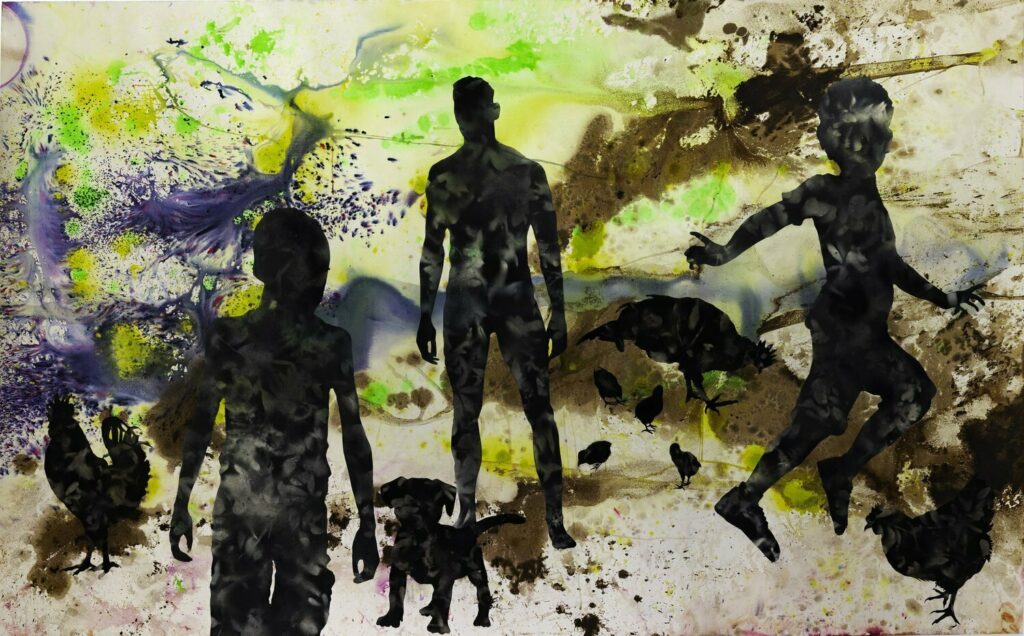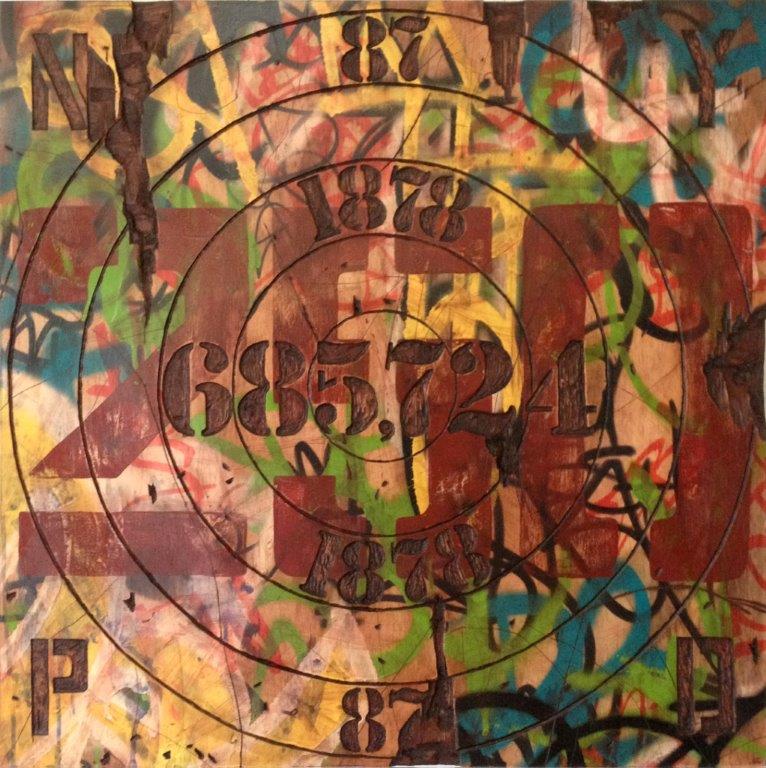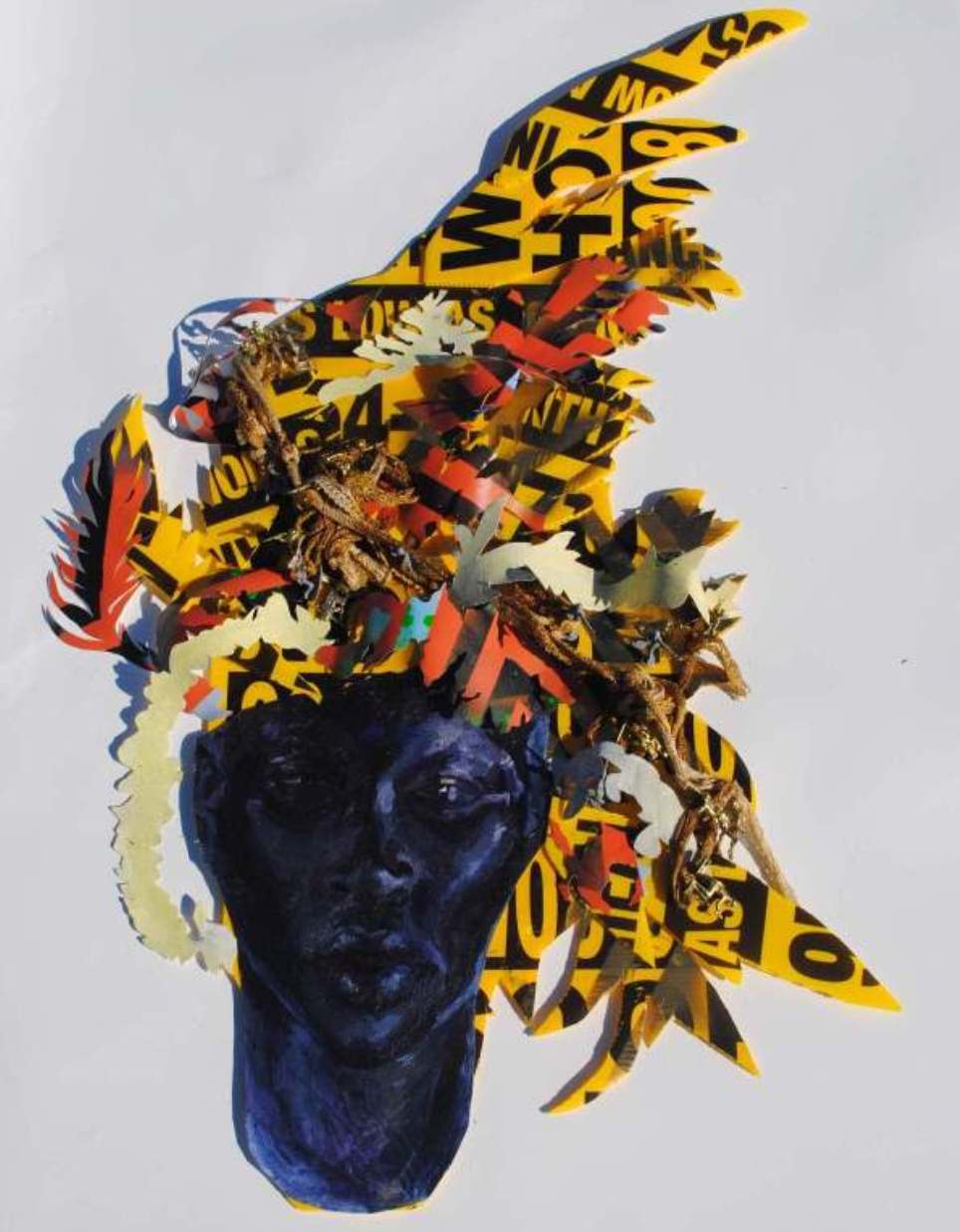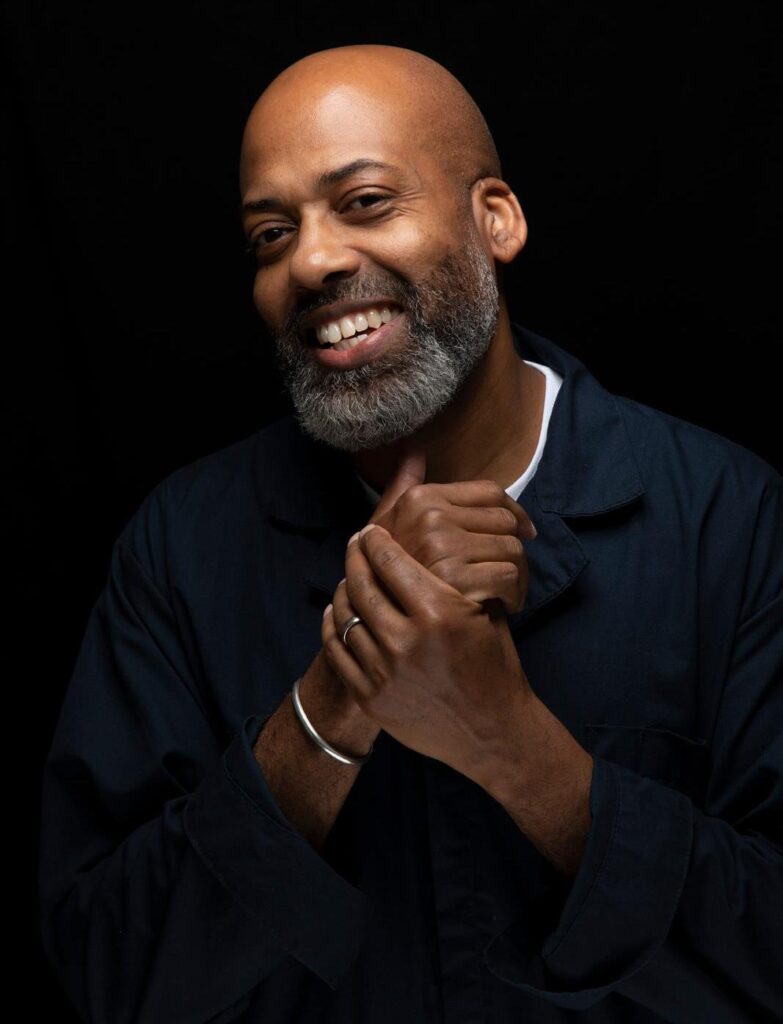
Morel Doucet Statement
Statement
 Through our dreams, we make contact with a vast, yet elusive side of ourselves. My work utilizes and reflects converging objects found in nature, such as an accumulation of flora and fauna. Drawing inspiration from nature’s paradoxical beauty, I aim to create work that not only stands out for its regal impact but also for its sensitivity. My inspiration comes from an ongoing interest and profound respect for indigenous tribal cultures of the Amazon, Aboriginal natives of Australia and the Yoruba tribe of West Africa. I am fascinated with garments and textiles of Native Americans and Afro-futurism. With this vocabulary of indigenous art, along with my personal dreams, I make whimsical forms resulting in a diary of my personal mythology.
Through our dreams, we make contact with a vast, yet elusive side of ourselves. My work utilizes and reflects converging objects found in nature, such as an accumulation of flora and fauna. Drawing inspiration from nature’s paradoxical beauty, I aim to create work that not only stands out for its regal impact but also for its sensitivity. My inspiration comes from an ongoing interest and profound respect for indigenous tribal cultures of the Amazon, Aboriginal natives of Australia and the Yoruba tribe of West Africa. I am fascinated with garments and textiles of Native Americans and Afro-futurism. With this vocabulary of indigenous art, along with my personal dreams, I make whimsical forms resulting in a diary of my personal mythology.
My work explores the cultural disparity of self-visualization, assimilation, and transnational identity. Using direct or suggested human figures, I am interested in exploring narratives of vulnerability, isolation, and alienation in tribal societies. The theme of flora and fauna falls heavily into my work; the root, stem, and leaf comprise of a complex capillary network that symbolically evokes underlying themes of our connections to nature. This connection is itself part of the larger web of existence, and how it is categorized and dissected in many fashions in search for balance and truth. This all-encompassing web connects all things through every expression of spatial and temporal existence – animal instinct, curiosity, and intellect – to navigate our way through the limited span of our existence.
Secrets That The Wind Carries Away, 2023
Mixed media on paper (mylar, aerosol paint, wood stains, indigenous flora )
44.75 x 72 ″

 Scientists say that every time we recall a memory we are in fact re-creating that memory—altering it, making the memory more self-centered—while history, by some definitions, is the effort to establish a “true memory.” So can a true history exist if no true memory can be made?
Scientists say that every time we recall a memory we are in fact re-creating that memory—altering it, making the memory more self-centered—while history, by some definitions, is the effort to establish a “true memory.” So can a true history exist if no true memory can be made?



